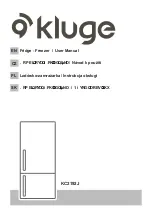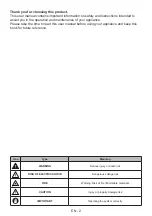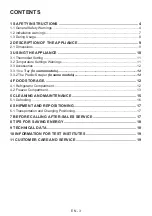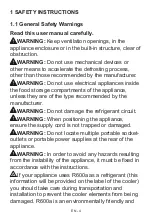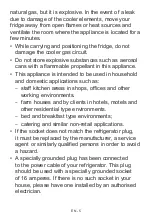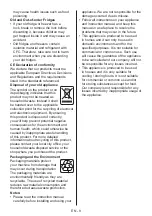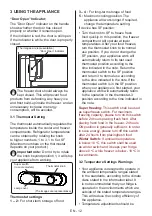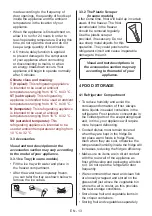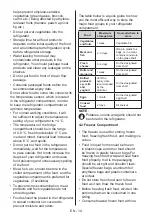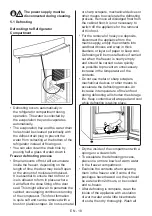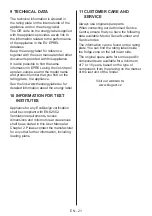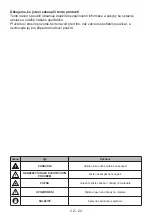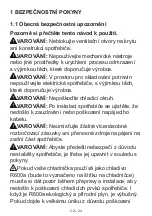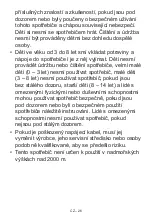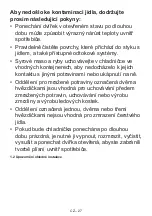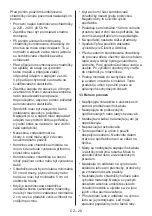
EN - 13
made according to the frequency of
door openings, the quantity of food kept
inside the appliance and the ambient
temperature in the location of your
appliance.
• When the appliance is first switched on,
allow it to run for 24 hours in order to
reach operating temperature. During this
time, do not open the door and do not
keep a large quantity of food inside.
•
A 5 minute delay function is applied
to prevent damage to the compressor
of your appliance when connecting
or disconnecting to mains, or when
an energy breakdown occurs. Your
appliance will begin to operate normally
after 5 minutes.
Climate class and meaning:
T (tropical):
This refrigerating appliance
is intended to be used at ambient
temperatures ranging from 16 °C to 43 °C.
ST (subtropical):
This refrigerating
appliance is intended to be used at ambient
temperatures ranging from 16 °C to 38 °C.
N (temperate):
This refrigerating appliance
is intended to be used at ambient
temperatures ranging from 16 °C to 32 °C.
SN (extended temperate):
This
refrigerating appliance is intended to be
used at ambient temperatures ranging from
10 °C to 32 °C.
3.3 Accessories
Visual and text descriptions in the
accessories section may vary according
to the model of your appliance.
3.3.1 Ice Tray
(In some models)
• Fill the ice tray with water and place in
the freezer compartment.
• After the water has completely frozen,
you can twist the tray as shown below to
remove the ice cubes.
3.3.2 The Plastic Scraper
(In some models)
After some time, frost will build up in certain
areas of the freezer. The frost
accumulated in the freezer
should be removed regularly.
Use the plastic scraper
provided, if necessary. Do not
use sharp metal objects for this
operation. They could puncture the
refrigerator circuit and cause irreparable
damage to the unit.
Visual and text descriptions in
the accessories section may vary
according to the model of your
appliance.
4
FOOD STORAGE
4.1 Refrigerator Compartment
•
To reduce humidity and avoid the
consequent formation of frost, always
store liquids in sealed containers in the
refrigerator. Frost tends to concentrate in
the coldest parts of the evaporating liquid
and, in time, your appliance will require
more frequent defrosting.
•
Cooked dishes must remain covered
when they are kept in the fridge.Do
not place warm foods in fridge.Place
them when they are cool, otherwise the
temperature/humidity inside the fridge will
increases, reducing the fridge’s efficiency.
•
Make sure no items are in direct contact
with the rear wall of the appliance as
frost will develop and packaging will stick
to it. Do not open the refrigerator door
frequently.
• We recommend that meat and clean fish
are loosely wrapped and stored on the
glass shelf just above the vegetable bin
where the air is cooler, as this provides
the best storage conditions.
•
Store loose fruit and vegetable items in
the crisper containers.
•
Storing fruit and vegetables separately
Содержание KC2192J
Страница 86: ...52317836...

